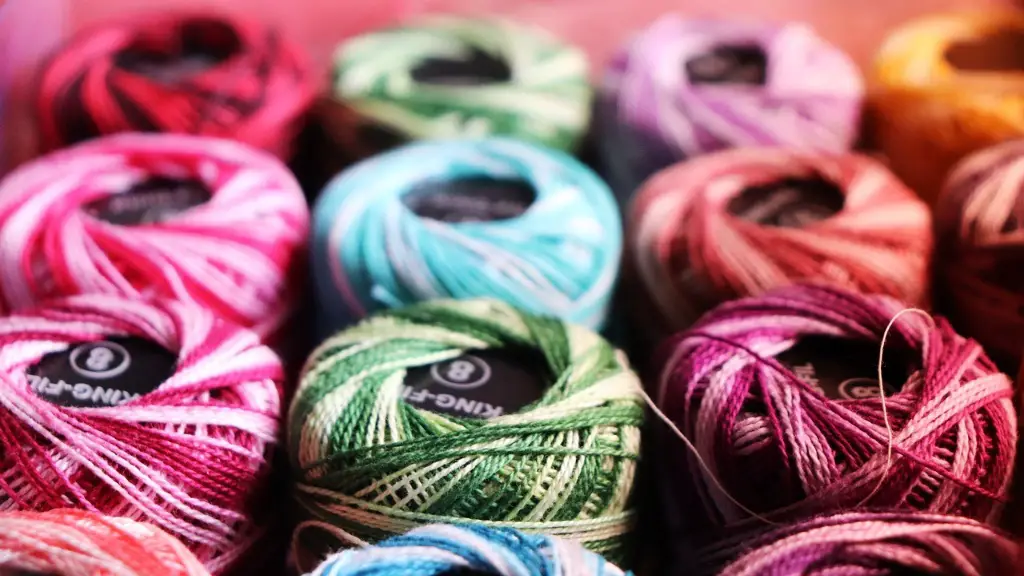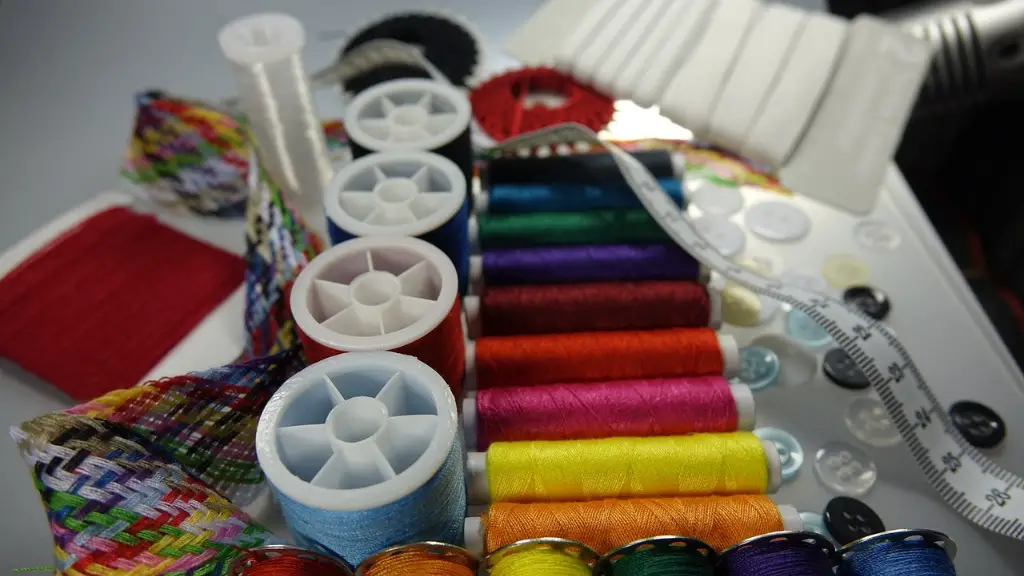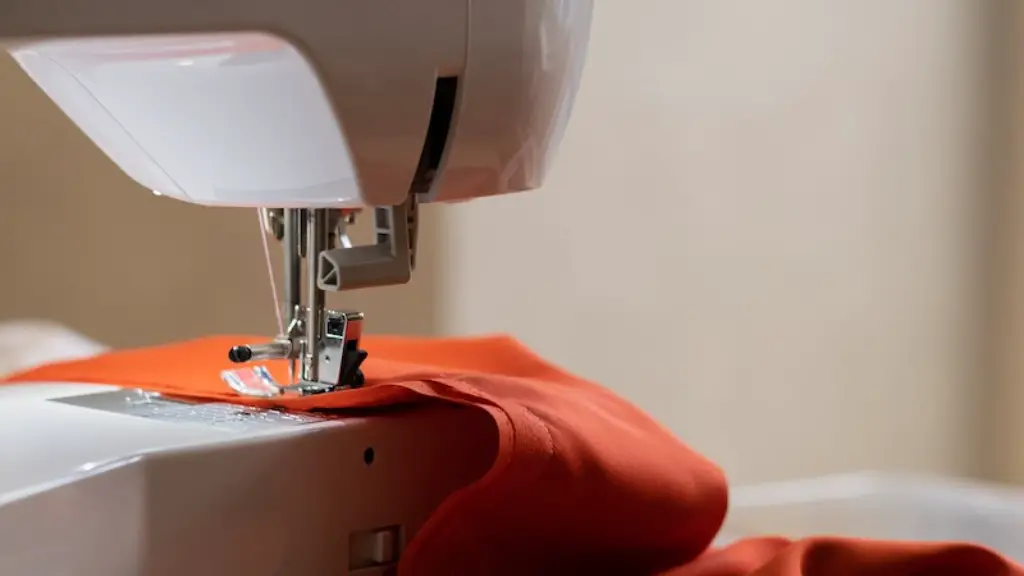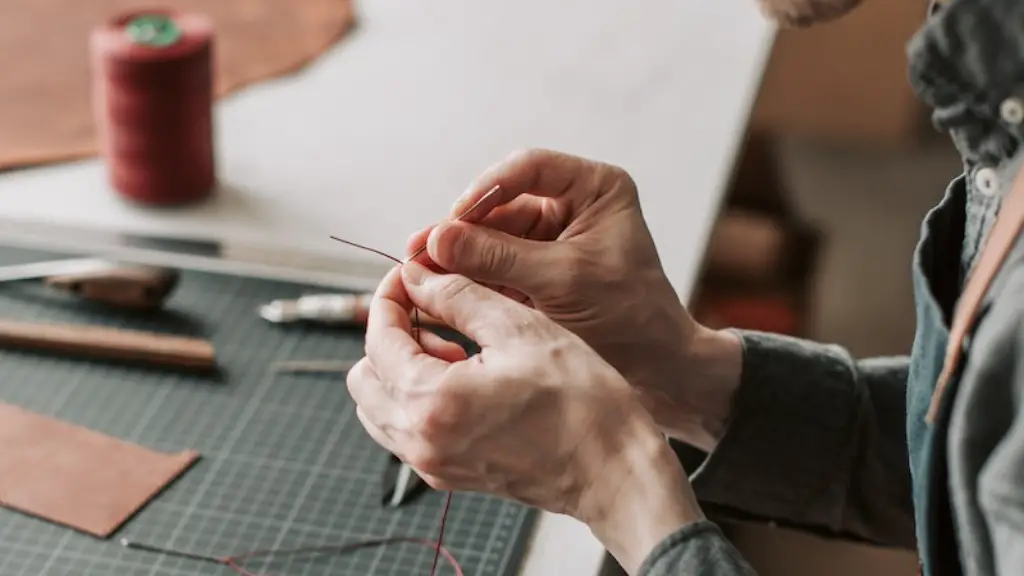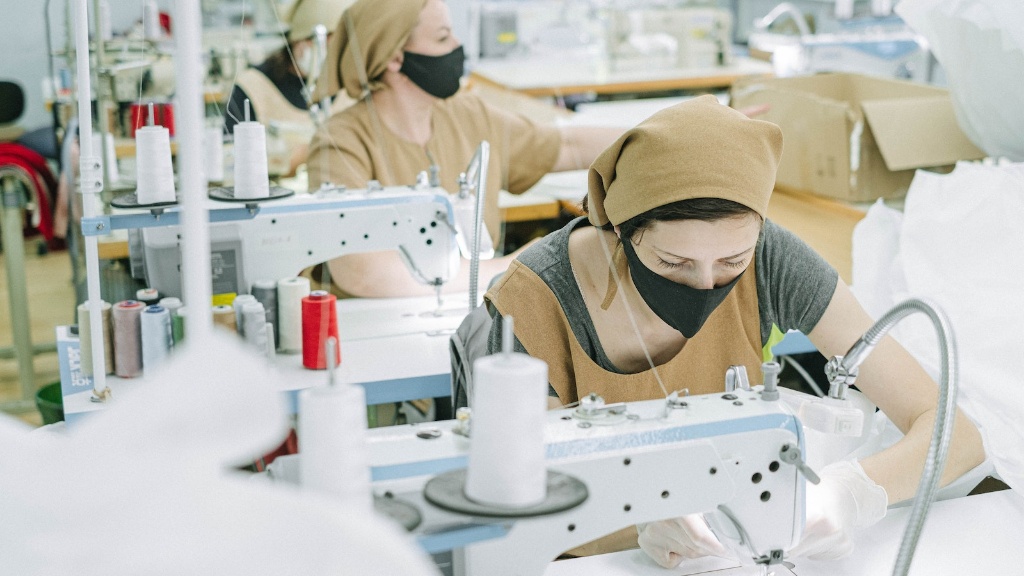From backpacks to awnings, tents, tarpaulins and more, canvas is one of the most popular materials in use today. But, can a regular sewing machine handle the job when it comes to stitching canvases? The answer is: yes, but it’s not as simple as it seems.
In order to understand why a regular sewing machine can handle sewing canvas, you need to consider the basics of a sewing machine. Most regular sewing machines have the capability to handle the strongest of fabric, providing that a powerful motor is present. Generally, canvas is considered somewhat heavier than other materials, and so it requires a more powerful stitch. A good quality sewing machine should have no difficulty sewing through canvas.
However, one of the main issues when it comes to sewing canvas with a regular machine is the thickness of the material. Canvases often come in different sizes and thicknesses, and if a machine is not powerful enough it can struggle to create a neat and durable stitch. Additionally, some machines might not be able to handle larger widths of canvas. In this case, a special ‘overlock’ machine or an industrial type of sewing machine would be necessary to ensure the canvas is properly sewn.
In order to ensure that a sewing machine is well-suited to the job of stitching canvas, it is always best to check the size and power of the machine before attempting the job. Generally, it is also recommended that special canvas needles are used, as opposed to the more standard metal needles. There is also an excellent range of sewing machine needles that have been specifically designed for thicker materials, so if you own a regular sewing machine and want to sew canvas, then this is definitely an option to consider.
It is also important to remember that in order to achieve the best result when sewing canvas, it is important to select the correct type of thread as well. Standard cotton thread is usually not suitable for heavier fabrics, and so opting for a polyester-based thread can give better results. This type of thread is more robust and is more likely to hold up over time. It is also recommended that a special threading oil is used in order to prevent the thread from fraying or snagging.
Finally, it should be noted that if you are attempting to sew canvas on a regular sewing machine, then it is best to make sure that the machine is regularly maintained. This is because the stronger fabrics can cause extra strain on the components of the machine, so it is always best to consult your machine’s manual for regular oiling and cleaning advice.
Selecting the Correct Thread
When it comes to using the correct thread for sewing canvas, it is important to consider the strength of the fabric and the type of stitch you want to achieve when selecting a thread. Generally, polyester thread will be stronger and more durable than standard cotton thread, and this is particularly important when working with heavier fabrics. It is always worth investing in a good quality thread, as this will ensure that your stitching holds up over time. Additionally, it is important to purchase thread that has been specifically designed for canvas in order to ensure that the stitching is tight and secure.
There are several varieties of thread available that are specifically designed for use on canvas. These include strong, durable heavy-duty threads as well as thinner, soft threads, depending on the type of stitching you need to achieve. It is also important to consider the colour of the thread, as this will have an effect on the look of the finished item. For instance, using a thread that is a contrasting colour to the canvas can give a more decorative look, whereas using a thread that is the same colour as the canvas will create a more subtle, professional finish.
Furthermore, in order to achieve a better stitching result with canvas, it is recommended that you use a thread conditioner or lubricant. This will make the thread stronger and less likely to snag or fray when it comes into contact with the canvas. Additionally, using a thread conditioner will help to reduce the amount of tension on the thread, making it easier to create a tight, neat stitching line.
Checking the Stitch Length
When sewing canvas, it is important to consider the stitch length of the sewing machine. If the stitch length is too loose, the stitches may not be strong enough and may come undone over time. Additionally, if the stitch length is too long, then the stitch may be visible from the other side of the material. Therefore, it is important to make sure that the stitch length of the sewing machine is correctly adjusted for the type of canvas that is being used. Generally, for thicker, heavier canvases the stitch length should be set between 3 and 3.5mm, however this may vary depending on the type of material being used.
Additionally, if you are stitching through multiple layers of canvas, then it may be necessary to adjust the stitch length to a smaller setting. This is because longer stitches may not be able to penetrate multiple layers of canvas, and therefore the stitches may not be strong enough to hold all the layers together. It is important to remember that there is no set rule when it comes to adjusting the stitch length on a sewing machine, so it is always best to experiment first in order to find out the best setting for the fabric being used.
Adjusting the Pressure for Heavy Fabric
When sewing heavier fabrics such as canvas, it is important to make sure that the presser foot pressure is properly adjusted. Generally, for heavier fabrics, it is recommended that the pressure is adjusted so that the presser foot is slightly lighter than normal. This is because for thicker fabrics, the presser foot may need to be able to move around or stretch the fabric in order to achieve a successful stitch. Therefore, it is important to make sure that the pressure is light enough so that the fabric can move around freely, but that it is still strong enough to ensure that the stitching holds up over time.
Additionally, when sewing a thicker material such as canvas it is important that the machine can accommodate the weight and size of the fabric. Generally, when working with heavier canvases, a larger shuttle hook is recommended, as this both protects the fabric from unnecessary strain and also allows for a more successful stitch. Generally, industrial stitching machines are better suited to canvas projects as they come equipped with larger shuttle hooks, however many regular sewing machines also have the capacity to handle larger fabrics.
Using Special Canvas Needles
When sewing canvas, it is important to consider the type of needles that are being used in order to achieve the best results. Generally, for heavier fabrics such as canvas, it is important to select a special canvas needle, as these are specifically designed for stitching heavier fabrics. Canvas needles usually have a larger eye than standard metal needles, which helps to prevent the thread from snagging or fraying whilst stitching. Furthermore, it is also important to consider the size of the needle when selecting a canvas needle, as this will have an effect on the success of the stitching. Generally, a needle size between 12 and 16 should be used for heavier fabrics.
Additionally, when sewing canvas with a regular sewing machine it is also a good idea to use a needle lubricating oil. This oil helps to keep the needles in optimal condition and can help to prevent the canvas from becoming stretched or snagged during stitching. Furthermore, needle lubricating oil can also help to reduce the amount of strain put on the machine during sewing, and therefore it is always recommended when sewing heavier fabrics such as canvas.
Using the Right Thread Tension
When it comes to selecting the correct thread tension when sewing canvas, it is important to remember that this may vary depending on the fabric being used. Generally, for heavier fabrics such as canvas, a thread tension of 2 or 3 is sufficient, however it is always best to experiment first to find out the best tension setting for the fabric being used. Additionally, when using thicker threads, such as polyester thread, it is also important to adjust the thread tension accordingly, as a higher tension setting may be necessary in order to achieve a successful stitchline.
Additionally, when sewing heavier fabrics such as canvas, it is also important to reduce the amount of strain placed on the machine, and this can be done in a number of ways. Firstly, by making sure the presser foot pressure is correctly adjusted, as mentioned previously. Additionally, it is important to ensure that the thread is correctly tensioned, as this will not only reduce the amount of strain on the machine, but also ensure that the stitchline is even and secure.
Finally, it is important to remember to regularly oil and maintain the machine when sewing canvas. This is because this type of fabric can put extra strain on the components of the machine, and therefore it is important to keep it in top condition in order to achieve successful stitching results.
